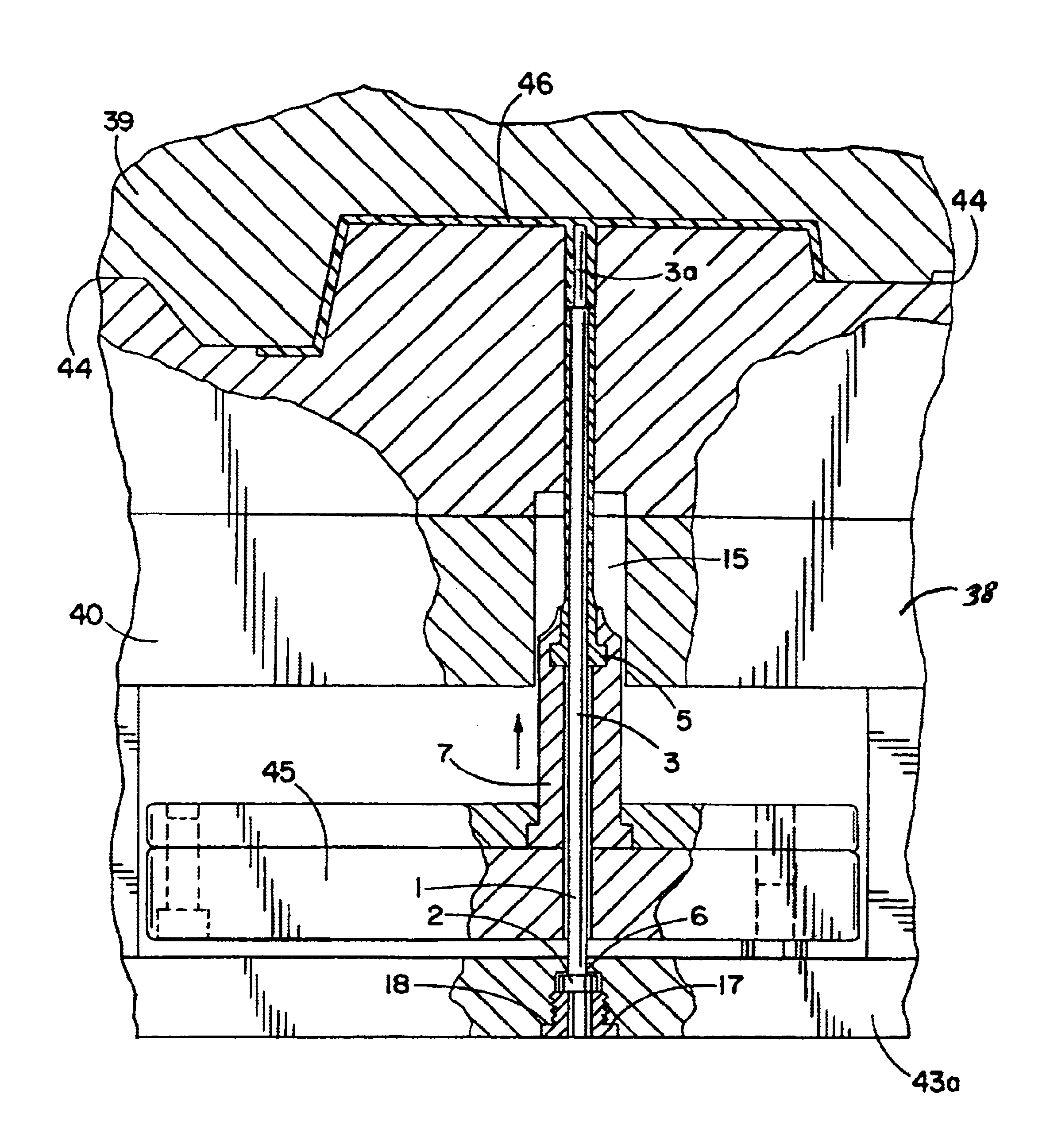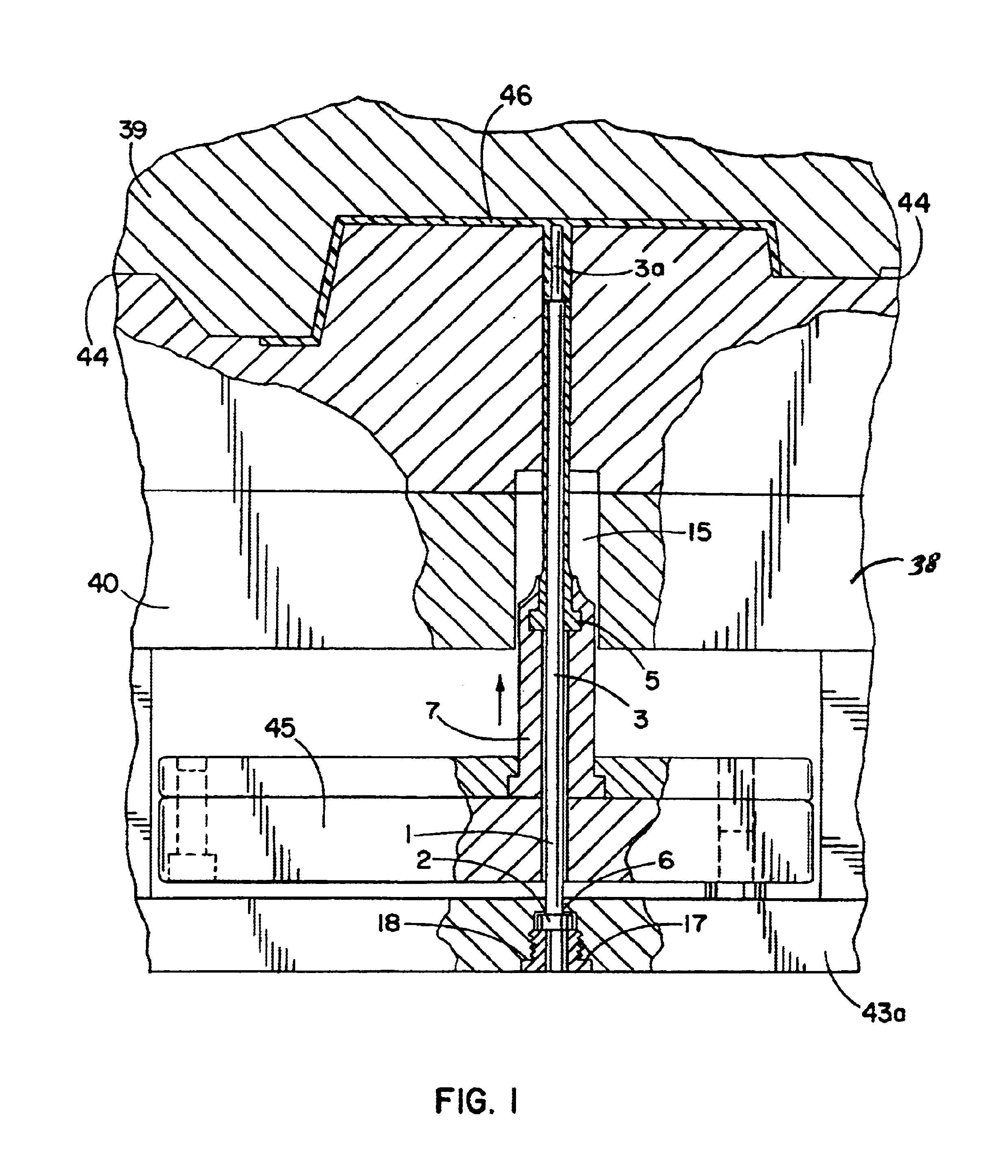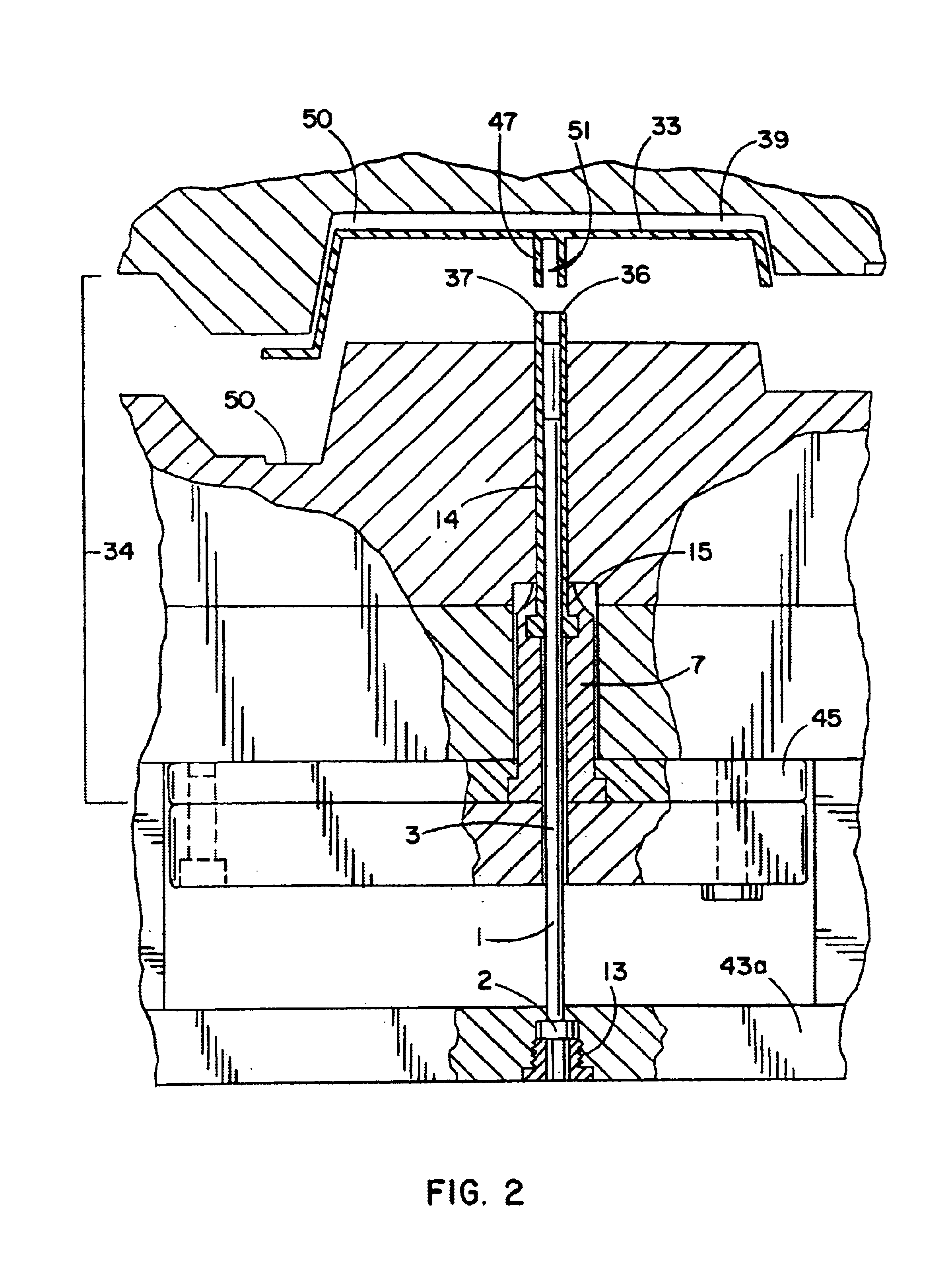Ejector sleeve for molding a raised aperture in a molded article
a technology of ejector sleeves and raised apertures, which is applied in the field of injection mold can solve the problems of damage, mold jamming, and core pins and sleeves that can be broken or bent during installation, and achieve cost savings, thin side walls, and reduced costs
- Summary
- Abstract
- Description
- Claims
- Application Information
AI Technical Summary
Benefits of technology
Problems solved by technology
Method used
Image
Examples
Embodiment Construction
The thin wall sleeves of one embodiment of the invention are shown mounted to an injection mold in FIGS. 1 and 2. As can be seen with referenced to these figures, core pin 1 extends through ejector plate 45, ejector sleeve extension 7 and ejector sleeve 5. The assembly of these pieces is best depicted in FIG. 3, which is an exploded view of these pieces. Ejector sleeve 5 is mounted through the T-slot 4 provided in the side of ejector sleeve extension 7. The core pin 1 is threaded through ejector sleeve extension 7 and ejector sleeve 5 and held in place by the mounting plug 9. As depicted in FIG. 3, the core pin 1 has a pin head 2, a shaft 3 having a first diameter and, as shown, may have a shaft end 3a which is machined by the end user to have a smaller diameter than the diameter of the shaft 3. The change in diameter between the pinhead 2 and shaft end 3a forms a pin shoulder 22 around the exterior surface of the pin 1.
As can be seen in FIGS. 1 and 2, the mold 38 including cavity h...
PUM
| Property | Measurement | Unit |
|---|---|---|
| thickness | aaaaa | aaaaa |
| thickness | aaaaa | aaaaa |
| thickness | aaaaa | aaaaa |
Abstract
Description
Claims
Application Information
 Login to View More
Login to View More - R&D
- Intellectual Property
- Life Sciences
- Materials
- Tech Scout
- Unparalleled Data Quality
- Higher Quality Content
- 60% Fewer Hallucinations
Browse by: Latest US Patents, China's latest patents, Technical Efficacy Thesaurus, Application Domain, Technology Topic, Popular Technical Reports.
© 2025 PatSnap. All rights reserved.Legal|Privacy policy|Modern Slavery Act Transparency Statement|Sitemap|About US| Contact US: help@patsnap.com



